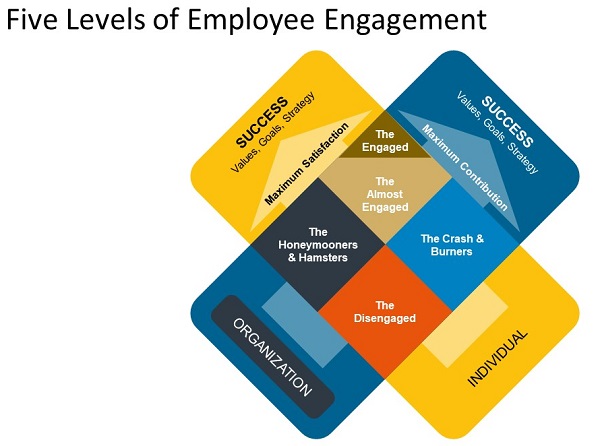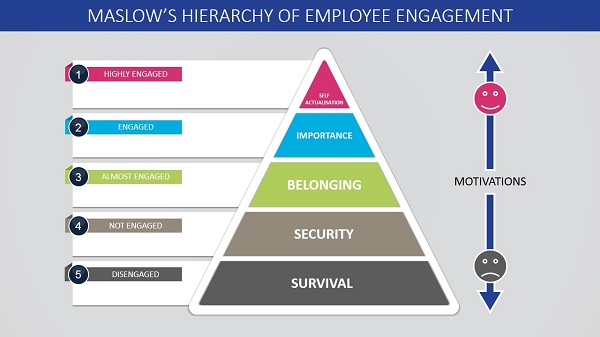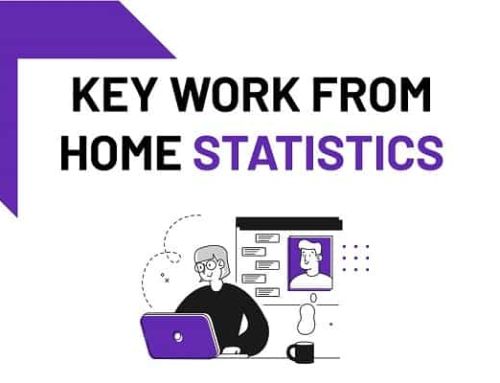With the COVID-19 pandemic normalizing the work from home (WFH), there is no denying that remote work is here to stay! Although WFH has allowed companies to get their hands on the best talent across the world without boundaries, it has also posed the challenge to engage and retain the talent. Remote employee engagement is rapidly becoming a top priority for managers to boost work satisfaction for their spread out employees.
Hubspot says that 69% of the employees will work harder if they get recognition. Employees who fail to receive feedback from their managers tend to lose interest in their work more readily. Corporates with higher employee engagement foster 22% profits and 18% higher employee retention rates.
Therefore, organizations looking to stay at the top of their game and retain the best talent must develop beneficial employee engagement strategies. But mere development of these strategies might not help you fully in achieving your goals. Tracking employee engagement with valuable metrics is equally imperative.
Before looking into some ways to measure and display the employee engagement metrics, let us dive deep into understanding this term.
What is Employee Engagement?
Employee engagement is not transactional. Higher salaries do not necessarily correlate with greater employee engagement levels. Managers can measure employee engagement by tracking their employees’ intrinsic motivation to work. Engaged employees tend to accelerate productivity and contribute maximum efforts.
Investopedia defines employee engagement as a human resource (HR) term describing the level of dedication and enthusiasm workers feel for their job. Engaged employees wish to get included in the broader success of the firm. They perceive their role as indispensable for its success.
Once measured, managers can display the KPIs tracked in eye-catching infographic templates and present them to their employees. For that, you can get your hands on professionally designed SlideModel.com templates. The ready-to-use templates are 100% customizable, feature a pixel-perfect design, and capture the interest of your audience, almost instantly.
Importance of Employee Engagement
Engaged employees focus on organizational goals and the results that they expect from them. On the flip side, disgruntled employees often lead to lowered productivity. They remain inclined to leave the firm as and when they get a chance. Hence, employee engagement is the key to obtain a competitive advantage and concentrate on job satisfaction.
Let us look at some more benefits of employee engagement:
Boosts Productivity
Employees who enjoy working in their companies and wish to do well will always work harder. An engaged employee team will work with efficiency and escalated enthusiasm. A workforce that remains dedicated to its work presents more opportunities to display above-average productivity than disengaged employees.
Employee Retention
Engaged employees get invested and involved in their roles. Thus, they pose a lesser threat of leaving their job than others. Keeping your workforce engaged is an essential point to retain them at your firm, harnessing their best abilities. Gallup reveals that organizations with high-turnover rates with highly engaged employees achieve 24% less employee turnover.
Improved Customer Satisfaction
Companies with engaged employees tend to experience a 10% boost in customer rankings and a 20% increase in company sales. Engaged employees believe more in your company goals, value its product, and remain passionate about their work responsibilities. It caters to excellent customer service where employees go to heights for the people that they serve.
Lower Absenteeism
When your employees take frequent leaves, it impacts performance and productivity. Employee absenteeism delays project deadlines, lower customer satisfaction, and deteriorates workplace relationships. But enthusiastic and dedicated employees rarely wish to take an off. They seek to complete their work efficiently and enjoy it.
Metrics to Measure Employee Engagement and Growth
Implemented every possible tactic to boost employee engagement? How to measure if these tactics are working or not? Which infographic templates to use to showcase these metrics? This section will cover your every doubt on how to measure and present employee engagement and growth.
Below are some metrics that every employee engagement survey must measure:
- Overall Performance
- Net Promoter Score
- Work-Life Balance
- Career Growth
- Turnover or Attrition
How to Measure These Metrics?
Engagement Surveys
Earlier, annual employee surveys were considered the best tool to measure employee engagement. But today’s top companies are moving away from them for much frequent surveys. Continuous feedback has become the new norm for getting a more accurate, timely, and actionable take on the employee engagement KPIs. You can ask questions like:
- How much value do they feel in the company?
- What is their satisfaction level for work-life balance?
Ensure to make the work environment conducive with regular feedback and asking for suggestions to improve the workplace environment.
Employee Net Provider Score (e-NPS) or Pulse Surveys
Net Promoter Scores get adopted by employers worldwide to collect work satisfaction information from the employees. This survey can proceed by asking questions like “Would you recommend working at our company to a colleague or friend?”
Get it answered on a scale of 0 to 10. Employees answering from 0 to 6 are considered a detractor. Employees with a 7 and 8 score are considered passive, and 9 and 10 employees are viewed as promoters.
Negative scores indicate that employees would not recommend people to work at your organization and vice versa.
Employee Turnover and Absenteeism Rate
The absence and turnover rates form important trends to measure the genuine interest of your employees in your company. Gallup says that every firm should aim for a 10% or less annual employee turnover rate. A high employee turnover can prove to be a huge ROI killer for your company.
Absenteeism and attrition rates indicate the effectiveness of your employee engagement strategies. It exhibits the areas where managers need to focus to improve it and boost employee experience. Focus on your employees’ professional growth with Learning and Development activities to foster a spirit of progress in them.
Leverage Infographic Templates to Display Employee Engagement Metrics
Infographic templates including, statistical, informational, process, timeline, hierarchical and more, help you demonstrate employee engagement lucidly. Therefore, you can incorporate the data and statistics from the surveys taken above and display them in infographic templates.
The X model of Employee Engagement PowerPoint Template
This template by SlideModel is based on a strategic concept presentation. Consisting of a single slide, it shows how employees can implement their qualifications and expertise to improve productivity. It incorporates a cross intersection of the organization and individuals interlocked in a matrix. It displays how your employees’ satisfaction is linked to the efforts taken by the company to keep them engaged.
Talent Wall Recognition PowerPoint Template
Recognition is one of the most important metrics for employee engagement. This infographic template provides just the solution for every manager to praise their employees for their hard work. Boost the confidence of your employees by offering appreciation with this wow-worthy talent wall presentation template.
Maslow’s Hierarchy of Employee Engagement PowerPoint Template
Abraham Maslow’s Hierarchy of Needs Theory states that psychological health depends on the fulfillment of needs in priority order. This infographic template proves best to explain the physiological behavior of the employees. Conduct employee engagement surveys. Customize this template with needs like security, survival, belongingness, and importance.
Employee engagement does not refer to a mere buzzword to exchange in conversations with employees. It holds a monumental success for employee satisfaction and company profitability. You must conduct professional training, surveys, and gather feedback regarding their workplace contentment. Showcase this feedback in powerful infographics and retain the best of your company talent.










Leave A Comment